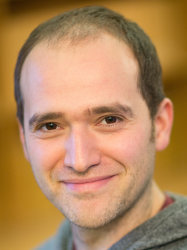Summary
We aim to decipher the ground rules of gene regulation and establish their functional interplay in biological phenomena involving global changes in phenotype, such as in cell differentiation and activation. Our current focus is on the role of non-coding DNA elements such as enhancers in integrating and transmitting gene regulatory information.
We combine experimental and computational approaches to study these questions, capitalising on our previous work on promoter-enhancer relationships, organisation of DNA regulatory elements and population genomics. Our particular interest is in human primary cells as models, and in genetic and epigenetic variation as “natural perturbations” in the system.
Our ultimate goal is to generate comprehensive functional models of gene control “logic” underlying cellular decisions. Interrogation and validation of these models will pinpoint key individual players (regulatory elements, genes, extrinsic signals) and their regulatory relationships in these processes and shed light on how they are remodelled in disease.
Selected Publications
Journal Articles
Dobnikar L, Taylor AL, Chappell J, et al., 2018, Disease-relevant transcriptional signatures identified in individual smooth muscle cells from healthy mouse vessels, Nature Communications, Vol:9
Freire-Pritchett P, Schoenfeldern S, Varnai C, et al., 2017, Global reorganisation of <i>cis</i>-regulatory units upon lineage commitment of human embryonic stem cells, Elife, Vol:6, ISSN:2050-084X
Javierre BM, Burren OS, Wilder SP, et al., 2016, Lineage-Specific Genome Architecture Links Enhancers and Non-coding Disease Variants to Target Gene Promoters, Cell, Vol:167, ISSN:0092-8674, Pages:1369-+
Cairns J, Freire-Pritchett P, Wingett SW, et al., 2016, CHiCAGO: robust detection of DNA looping interactions in Capture Hi-C data, Genome Biology, Vol:17, ISSN:1474-7596, Pages:127-127
Bolland DJ, Koohy H, Wood AL, et al., 2016, Two Mutually Exclusive Local Chromatin States Drive Efficient V(D)J Recombination, Cell Reports, Vol:15, ISSN:2211-1247, Pages:2475-2487
Spivakov M, 2014, Spurious transcription factor binding: Non-functional or genetically redundant?, Bioessays, Vol:36, ISSN:0265-9247, Pages:798-806

